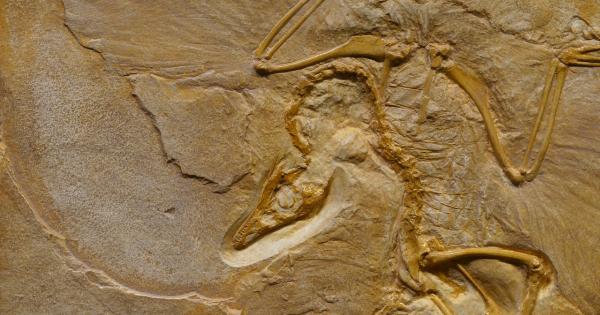Earthquakes are natural disasters that can cause immense destruction and loss of human lives. Despite advancements in technology, accurately predicting earthquakes remains a challenge for scientists.
However, it is fascinating to note that many animals have shown the ability to sense earthquakes before they occur.
The Science Behind Animal Seismic Sensitivity
Animals possess unique sensory systems that allow them to pick up on subtle changes in their environment, including the vibrations and electromagnetic disturbances associated with earthquakes.
Scientists have been studying this phenomenon and gathering evidence of animals displaying unusual behavior prior to seismic events.
Ancestral Awareness
One theory suggests that animals’ sensitivity to earthquakes is a result of their ancestral instincts. Throughout evolution, animals that were better equipped to detect seismic activity had a higher chance of survival.
Over time, these abilities became ingrained in their genetic makeup.
Keen Sense of Hearing
Many animals, such as dogs and elephants, possess exceptionally keen hearing abilities. They can detect sound frequencies that are beyond the range of human hearing.
This heightened sense of hearing allows them to perceive the low-frequency rumblings that often precede an earthquake.
Ability to Detect Vibrations
Some animals, such as snakes and spiders, have specialized sensors located in their skin or legs that are extremely sensitive to vibrations. These sensors help them navigate their environment and locate prey.
When an earthquake occurs, these animals can sense the subtle vibrations traveling through the ground, alerting them to an imminent seismic event.
Electromagnetic Sensitivity
Studies have shown that certain animals, particularly birds and fish, have the ability to detect changes in the Earth’s electromagnetic field. Prior to an earthquake, there can be significant disruptions in the natural electromagnetic activity.
These animals are attuned to these changes and exhibit unusual behaviors, such as altered flight patterns or erratic swimming, as a result.
Behavioral Changes in Animals
Prior to an earthquake, animals often exhibit abnormal behavior that can serve as a warning sign. Dogs may become agitated or bark excessively, birds may take flight in large numbers, and rodents may retreat to their burrows.
Such behavioral changes can provide valuable insights into imminent seismic activity.
Case Studies and Anecdotal Evidence
There are numerous accounts of animals predicting earthquakes throughout history. In 1975, a colony of toads in China abandoned their breeding site days before a major earthquake struck.
Similarly, during the 2004 Indian Ocean earthquake and tsunami, there were reports of elephants making their way to higher ground before the massive waves hit.
Animals also sense earthquakes on a smaller scale. Many pet owners have noticed their dogs exhibiting restlessness or hiding behavior prior to minor tremors.
Though these observations are anecdotal, they highlight the fascinating connection between animals and seismic events.
Potential Explanations for Animal Seismic Sensitivity
Scientists have put forth several theories to explain why animals can sense earthquakes before they happen. One hypothesis suggests that animals may be highly sensitive to changes in atmospheric conditions that precede seismic activity.
Another theory proposes that animals can detect the release of certain gases or chemicals that occur before an earthquake.
Some researchers believe that animals may be attuned to infrasound, which refers to sound waves below the frequency of human hearing. Infrasound is known to propagate over long distances and is produced by natural phenomena, including earthquakes.
It is possible that certain animals have evolved to detect and interpret these infrasonic signals.
Implications for Earthquake Prediction
The ability of animals to sense earthquakes has significant implications for earthquake prediction and early warning systems. By carefully studying their behavior, scientists may be able to develop methods to forecast earthquakes with greater accuracy.
For instance, the “RADAR” system, developed by the United States Geological Survey, uses an array of motion sensors to detect the subtle movements of animals.
This data, combined with other seismic information, can potentially provide an early warning of an impending earthquake.
The Future of Animal Seismic Sensitivity Research
While animal seismic sensitivity is a fascinating field of study, there is still much to discover. Researchers continue to explore how various animal species perceive and respond to earthquakes.
By gaining a deeper understanding of this phenomenon, scientists may be able to unlock further insights into the complex nature of seismic events.
Studying animal behavior can also help in creating effective strategies for earthquake preparedness and risk mitigation.
By paying attention to the behaviors of animals around us, we may be able to save lives and minimize the damage caused by earthquakes.































